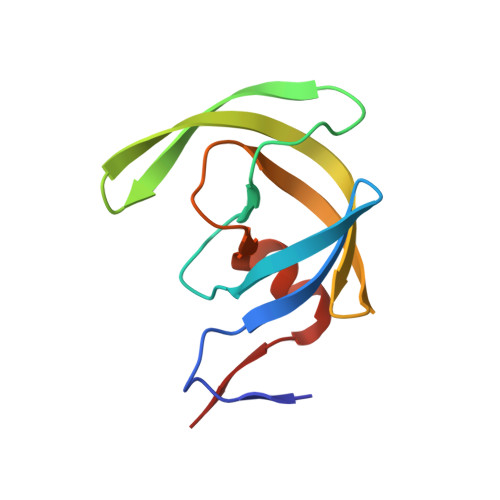Design of HIV-1 Protease Inhibitors with Amino-bis-tetrahydrofuran Derivatives as P2-Ligands to Enhance Backbone-Binding Interactions: Synthesis, Biological Evaluation, and Protein-Ligand X-ray Studies.
Ghosh, A.K., Martyr, C.D., Osswald, H.L., Sheri, V.R., Kassekert, L.A., Chen, S., Agniswamy, J., Wang, Y.F., Hayashi, H., Aoki, M., Weber, I.T., Mitsuya, H.(2015) J Med Chem 58: 6994-7006
- PubMed: 26306007
- DOI: https://doi.org/10.1021/acs.jmedchem.5b00900
- Primary Citation of Related Structures:
5BRY, 5BS4 - PubMed Abstract:
Structure-based design, synthesis, and biological evaluation of a series of very potent HIV-1 protease inhibitors are described. In an effort to improve backbone ligand-binding site interactions, we have incorporated basic-amines at the C4 position of the bis-tetrahydrofuran (bis-THF) ring. We speculated that these substituents would make hydrogen bonding interactions in the flap region of HIV-1 protease. Synthesis of these inhibitors was performed diastereoselectively. A number of inhibitors displayed very potent enzyme inhibitory and antiviral activity. Inhibitors 25f, 25i, and 25j were evaluated against a number of highly-PI-resistant HIV-1 strains, and they exhibited improved antiviral activity over darunavir. Two high resolution X-ray structures of 25f- and 25g-bound HIV-1 protease revealed unique hydrogen bonding interactions with the backbone carbonyl group of Gly48 as well as with the backbone NH of Gly48 in the flap region of the enzyme active site. These ligand-binding site interactions are possibly responsible for their potent activity.
Organizational Affiliation:
Department of Chemistry and Department of Medicinal Chemistry, Purdue University , West Lafayette, Indiana 47907, United States.

















